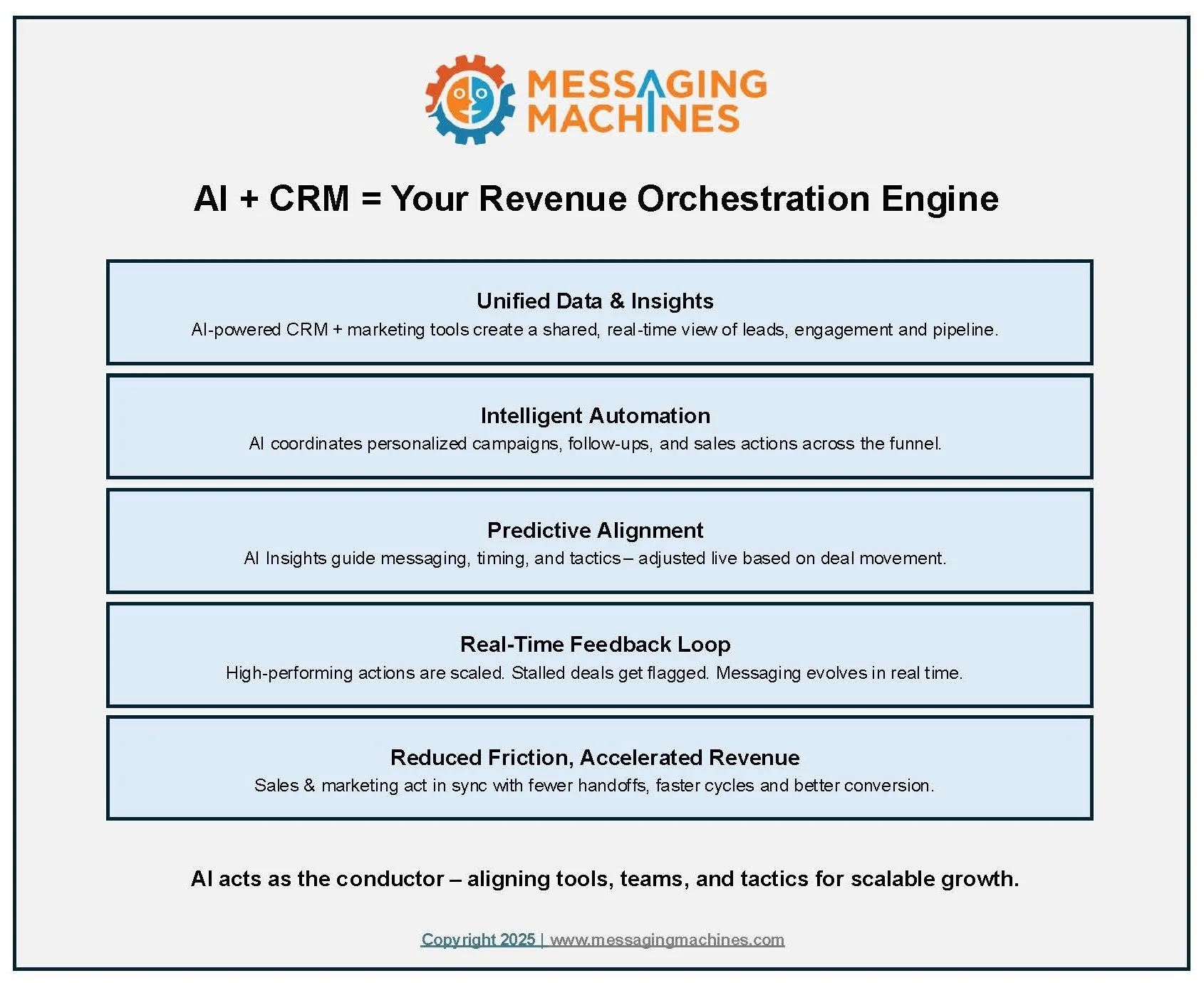AI Is Not a Strategy
Why Revenue Acceleration Requires More Than Just Tools
Somewhere out there, a sales team is blaming marketing.
A marketing team is blaming the CRM.
And an AI tool is quietly writing both teams a break-up email.
I’ve seen it time and again. Companies become obsessed with the newest hyper-hyped tool. For a while, CRM had the spotlight. The goal was to “optimize” CRM.
Now its AI. The goal is to automate everything. Efforts are made to automate email sequences, plug in predictive lead scoring, and maybe even generate a few thought leadership articles using ChatGPT.
And then… not much happens. Revenue still limps along. The funnel still leaks. Sales and marketing still operate with different languages, different calendars, and, sometimes it seems, on different planets.
That’s because tools aren’t strategy. And AI, powerful as it is, won’t deliver results without orchestration.
The Tool Trap: When Powerful Tech Works in Isolation
It is easy to fall into the tool trap where you treat AI, CRM or whatever acronym is next as standalone revenue technology tools instead of connected components in a strategic revenue system.
Here's what that might look like in the wild:
• Marketers using ChatGPT to rewrite blog posts, while sales reps experiment with Gemini to craft prospecting emails.
• AI being used as a digital assistant—but with no connection to CRM data, deal stages, or buyer behavior.
• CRM working like a digital filing cabinet: clean, structured, and rarely consulted by anyone outside the sales team.
• Leadership wondering why the “AI investment” hasn’t moved the needle on pipeline quality or conversion rates.
Most of the AI I see in marketing and sales today at mid-market companies is individualized—people tinkering in isolation. It’s clever, but it’s not coordinated. It doesn’t scale. And it doesn’t deliver predictable revenue growth.
Why AI + CRM Alone Won’t Get You There
Don’t get me wrong—AI and CRM are incredibly powerful. But they’re amplifiers, not orchestrators.
If you’re working with poor positioning, haphazard prospecting, misaligned teams, broken handoffs, commoditized content or disconnected messaging, AI and CRM will just help you make those mistakes faster and at scale. Here’s the reality:
• AI alone can’t learn your brand’s tone, your buyers’ context, or your company’s strategic goals unless you teach it—and integrate it.
• CRM alone can’t guide your messaging, content, or engagement strategy unless it’s connected to your prospects’ actual behavior.
What you need isn’t more tools. You need a revenue operating system—a smart, orchestrated framework where AI and CRM don’t just coexist… they collaborate.
Revenue Orchestration: What It Actually Looks Like
Build systems where AI solutions and CRM come together to connect your marketing, sales, and customer teams around one shared objective: revenue acceleration. Think of it like this: CRM is your rhythm section. AI is the conductor. And strategy? That’s your sheet music.
Here’s what happens when it’s orchestrated well:
Unified Data & Insights: AI marketing tools and CRM work from the same data sources—so sales and marketing teams aren’t fighting over conflicting dashboards.
Intelligent Automation: No more one-off email hacks. AI handles next-best actions, retargeting, and content selection based on deal stage and buyer signals.
Predictive Alignment: AI-enhanced CRM forecasts deal velocity and highlights pipeline gaps. Marketing adjusts campaigns in real time to address them.
Real-Time Feedback Loops: High-performing content is surfaced and reused. Sales messaging that falls flat gets flagged. The system learns and improves.
Less Friction, Faster Revenue: With shared insights and coordinated action, your sales and marketing teams act like one team. Because they finally are.
What This Looks Like in Real Life
A seller-doer, salesperson or business development rep opens the CRM and sees AI-surfaced insights on what a key prospect has read, clicked, and ignored—along with recommended next steps and personalized content links.
Marketing teams prioritize campaigns not based on quarterly calendars, but on what’s moving—or stalling—in the pipeline.
Executives look at one dashboard and see progress toward revenue goals, not just isolated team metrics.
That’s revenue orchestration.
And that’s what we’re focusing on every day with our clients.
Want to See It in Action? Join Us April 22
If this discussion hits close to home or your sales and marketing teams are one bad quarter away from that break-up email, I’d love for you to join us.
On April 22, 2025 from 11:00 AM to 12:00 PM ET, I’ll be co-hosting a live conversation with Chuck Ingram, CEO of CongruentX, Michael Rodriguez of East Carolina University and David Schweidel of Emory University.
We’ll unpack what it takes to turn AI and CRM into a real revenue engine—and share examples of how companies like yours are making it work.
Reserve your spot here (it’s free, but space is limited to keep the dialogue real and useful).
Let’s stop playing whack-a-tool.
Let’s start building revenue orchestration systems.


